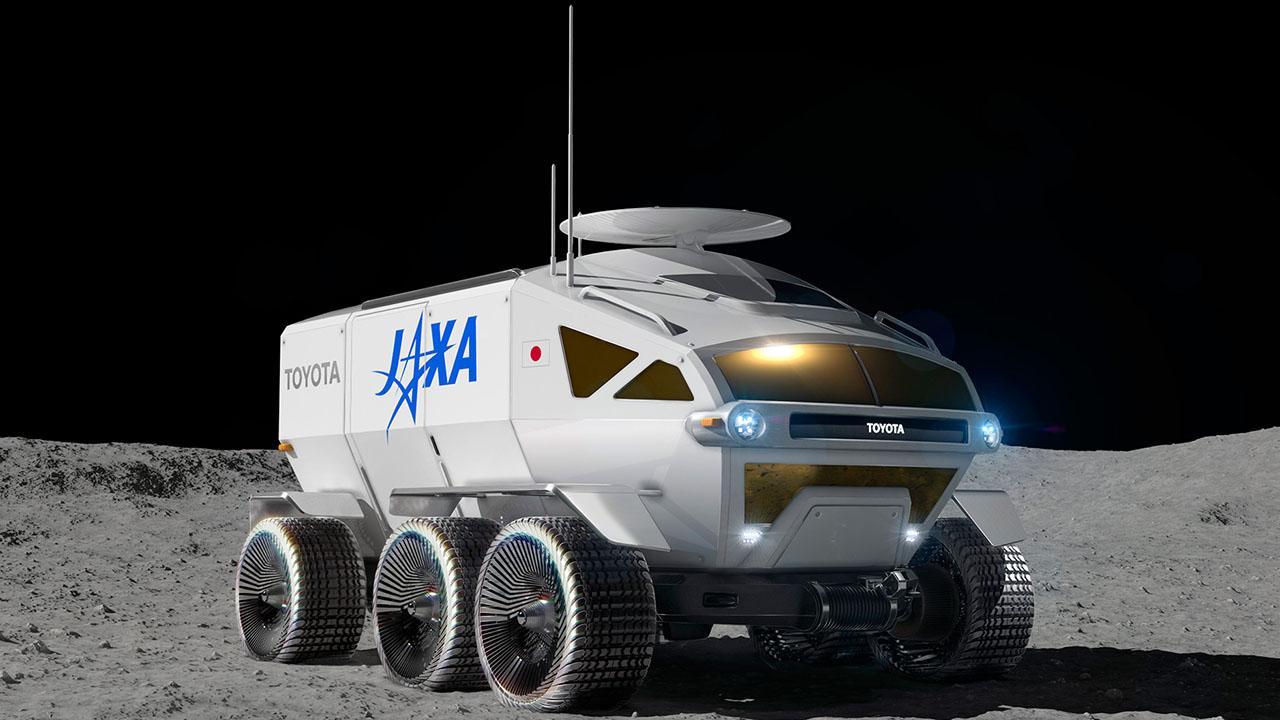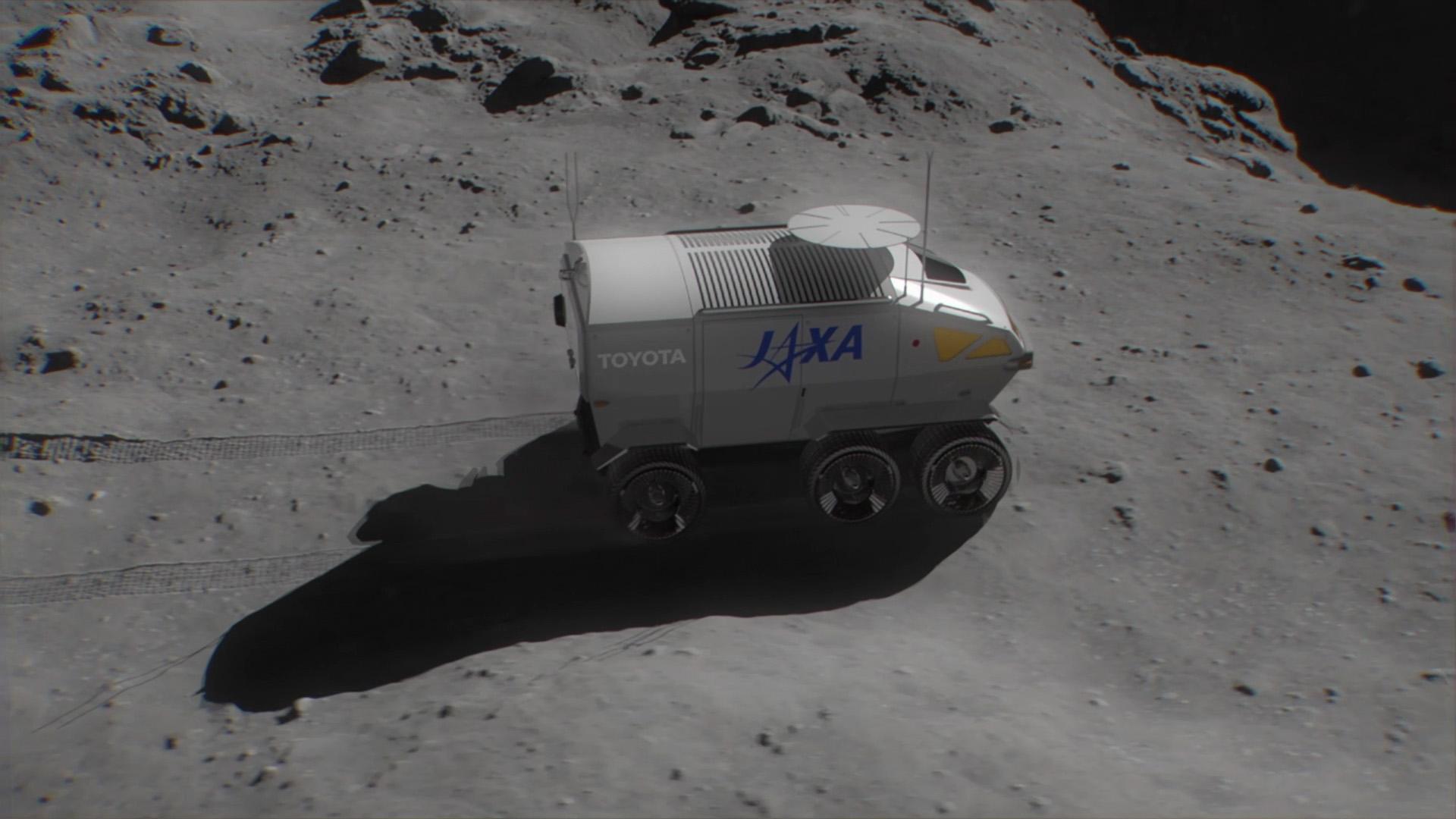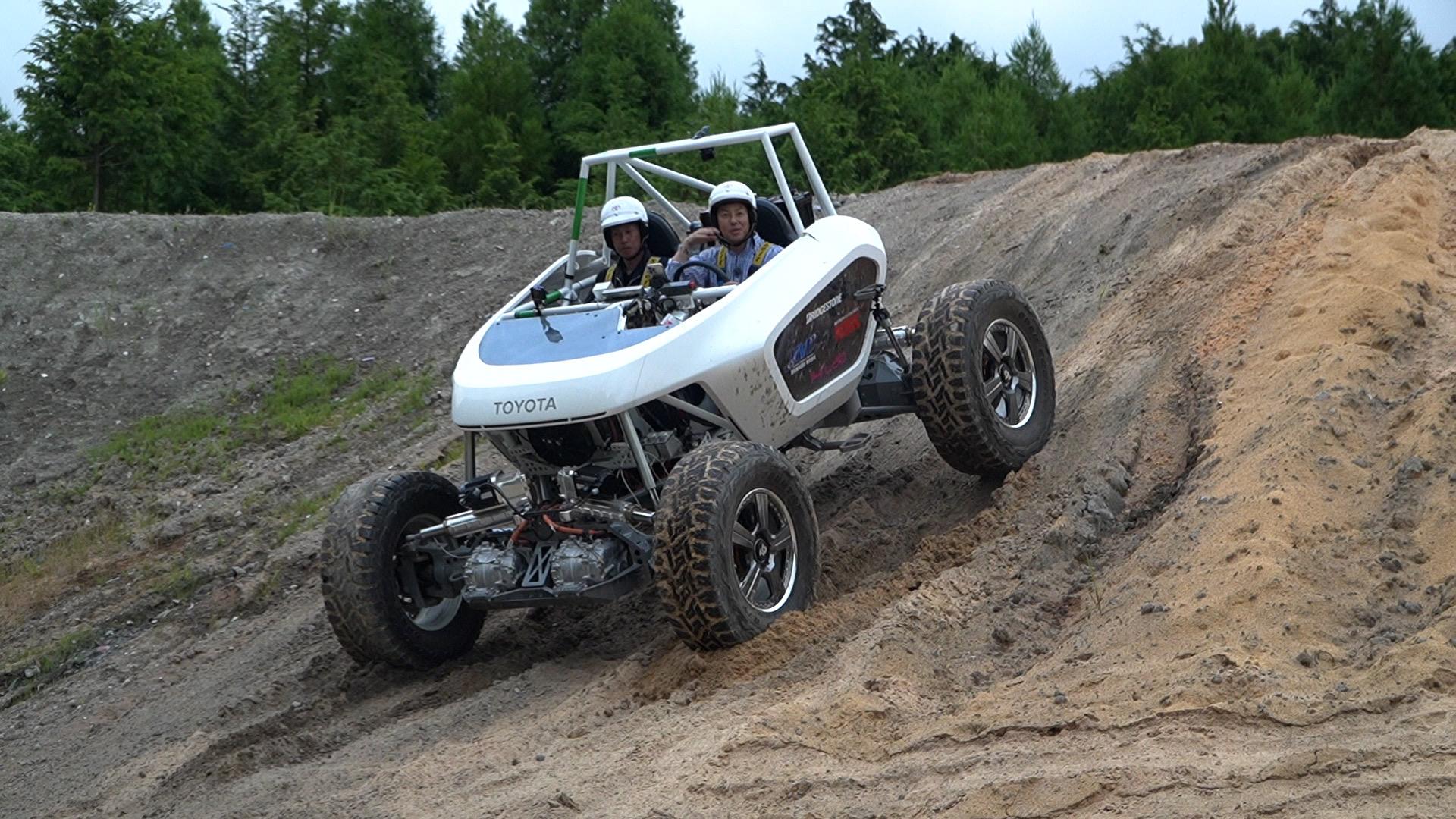
Toyota is researching and developing the LUNAR CRUISER, a crewed pressurized rover to provide mobility on the moon's surface, which JAXA hopes to launch in 2029. At a recent press briefing, the team provided updates on development.
Why is Toyota developing a lunar rover?

But why is Toyota developing a lunar rover in the first place? What is the project’s purpose and significance? Yamashita underscored its roots in one of Toyota’s founding ideals: contributing to the greater good through industry.
Yamashita
In pursuing this project, we want to contribute to Japan by advancing technology and enabling people to grow.
Even before the lunar landing in 2029, we hope to feed the technologies honed through the rover project back into society here on Earth.
According to Yamashita, the crewed pressurized rover entails four core technologies: regenerative fuel cells, off-road driving performance, automated off-road driving, and user experience, or UX (habitability, visibility, operability, etc.).
At the briefing, he outlined the state of progress in developing each of these technologies and how they will benefit people on Earth.
First come regenerative fuel cells (RFC), a system that combines water electrolysis and fuel cells (FC). Toyota has been fine-tuning its FC technology and reliability for many years, not least through the Mirai. Drawing on this home-grown expertise, regenerative fuel cells mark a further evolution of these technologies.
On the moon, day and night each last for two weeks. Despite this extreme environment, the surface is believed to hold water resources.
During daylight hours, this water and electricity generated by solar cells could be used to produce hydrogen and oxygen, while the fuel cells supply power at night. Establishing such an energy cycle would allow sustainable long-term exploration on the moon’s surface. Yamashita says that the current research is working toward this goal.
Yamashita
Technology that can continuously generate electricity using only sunlight and water in conditions as hostile as the lunar surface would also have applications in various societies and environments on Earth, including remote islands or villages, disaster evacuation shelters, conflict zones, and refugee camps.
By refining RFC technology through the LUNAR CRUISER development, we believe that we can significantly contribute to the realization of a circular society and ultimately to the global challenge of carbon neutrality.
Next is off-road driving performance. The lunar surface serves up diverse conditions, including craters, rocks, and slopes, all blanketed in a fine-grained sand known as regolith.
Yamashita
The challenge is producing the tires and driving force control to handle this demanding environment while also balancing driving performance and power consumption.
Currently, we are using an off-road test vehicle to research optimal motion control and developing various components, including metal tires, in partnership with Bridgestone and a suspension system incorporating electrification technology.
According to Yamashita, the team has built an off-road test vehicle equipped with motors and independent steering mechanisms in each of its four wheels. It is now being tested on an off-road course that emulates craters and other lunar landscape features. Within this fiscal year, Toyota will begin building a comprehensive full-scale test vehicle and speed up development on a new test course at the company’s R&D facilities.

Yamashita
We are developing off-road technology that will enable the rover to safely and efficiently traverse rocks and craters during lunar exploration.
We believe the expertise gained in the process can benefit vehicles on Earth in the form of technologies that enable safe driving anywhere on the planet.

